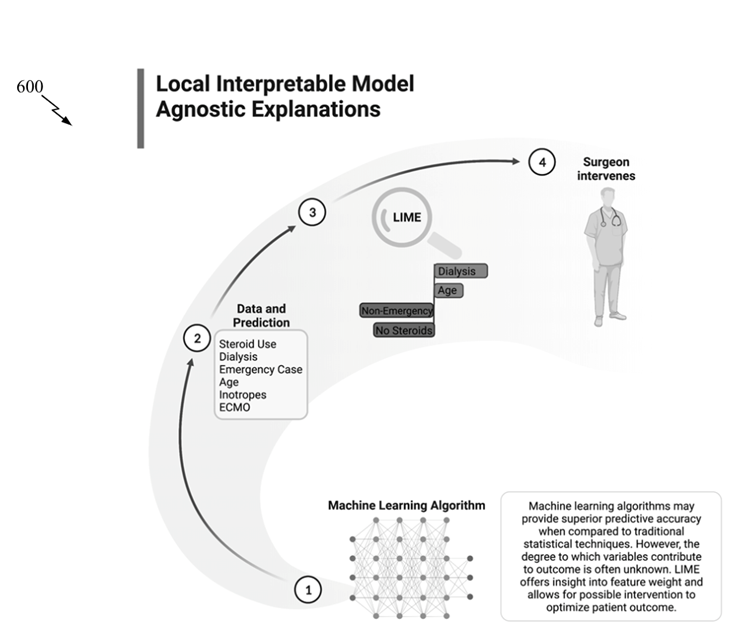Advantages:
- By incorporating machine learning algorithms and the LIME approach, this research aims to refine the existing risk prediction models used in high-risk cardiac surgery.
- The use of refined risk prediction models can assist surgeons in operative decision-making. By providing a clearer understanding of the potential outcomes and risks associated with high-risk cardiac surgery, surgeons can make more accurate assessments and choose appropriate treatment plans.
- By employing the LIME approach, this research aims to improve the interpretability of machine learning models. This transparency allows surgeons and patients to better understand the underlying factors influencing the predictions, building trust and confidence in the decision-making process.
Summary:
This research aims to address the challenges faced by surgeons and patients in high-risk cardiac surgery decision-making and patient counseling. Traditional risk prediction models have been widely used but have limitations in capturing the complex interactions between clinical variables and patient outcomes. To overcome these limitations, our researchers propose the use of machine learning algorithms to refine the predictions of the ACS-NSQIP risk calculator, a widely employed national surgical quality reporting program.
The researchers specifically employ a method called local interpretable model-agnostic explanations (LIME) to improve the interpretability of the machine learning models. LIME helps provide explanations for the decisions made by the models, making them more transparent to users seeking to understand the underpinnings of model feature selection and performance. By incorporating machine learning and LIME, the researchers aim to enhance the accuracy and individualization of risk predictions for high-risk cardiac surgery patients.

An example approach to interpretable machine learning using a local interpretable model agnostic explanations (LIME) approach
Desired Partnerships:
- License
- Sponsored Research
- Co-Development